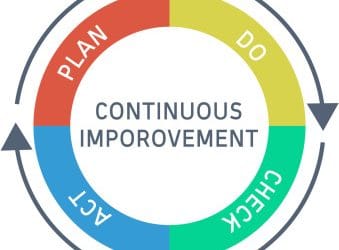In today’s fast-paced construction industry, where deadlines are tight and margins tighter, the success of a project hinges not only on engineering prowess but also on strategic planning. Enter Geographic Information Systems (GIS) a transformative technology that has reshaped how construction professionals approach planning, execution, and management. Once the domain of geographers and cartographers, GIS is now a core asset in the construction toolkit, offering rich spatial insights that drive smarter decisions from the ground up.
Whether it’s evaluating terrain suitability, optimizing supply routes, pinpointing underground utilities, or forecasting potential hazards, GIS equips project teams with the data-driven clarity needed to minimize risk and maximize efficiency. As construction becomes increasingly complex, the integration of GIS is not just an advantage it’s a necessity.
Geographic Information Systems (GIS) have emerged as a pivotal tool, revolutionizing how projects are planned, executed, and managed. By integrating spatial data with analytical capabilities, GIS enhances decision-making processes, ensuring efficiency, safety, and sustainability throughout the construction lifecycle.
Site Analysis: Building on Solid Ground
Before the first brick is laid, understanding the terrain is crucial. GIS facilitates comprehensive site analysis by overlaying various data layers such as topography, soil composition, flood zones, and existing infrastructure onto a single map. This holistic view aids in identifying optimal construction sites, assessing environmental impacts, and ensuring compliance with zoning regulations. For instance, GIS can highlight areas prone to flooding or landslides, allowing planners to mitigate potential risks early in the project.
Logistics: Streamlining Construction Operations
Efficient logistics are the backbone of timely project completion. GIS enhances logistical planning by mapping out transportation routes, identifying potential bottlenecks, and optimizing material delivery schedules. By analyzing traffic patterns and accessibility, construction managers can devise strategies that minimize delays and reduce transportation costs. Moreover, GIS supports real-time tracking of equipment and materials, ensuring resources are utilized effectively.
Utilities Mapping: Navigating the Underground
Understanding the labyrinth of underground utilities is vital to prevent costly damages and service disruptions. GIS plays a critical role in subsurface utility engineering (SUE) by accurately mapping existing utilities such as water lines, electrical cables, and gas pipelines. This precise mapping helps in avoiding accidental strikes during excavation and facilitates efficient planning for utility relocations or upgrades. By integrating utility data into GIS, construction teams can visualize and manage underground infrastructure with greater confidence.
Risk Assessment: Foreseeing and Mitigating Hazards
Construction projects are fraught with potential risks, from natural disasters to structural failures. GIS empowers risk assessment by analyzing spatial data to identify hazard-prone areas. Tools like FEMA’s HAZUS utilize GIS to model the impacts of earthquakes, floods, and hurricanes, providing valuable insights into potential vulnerabilities. By simulating various scenarios, project managers can develop contingency plans, design resilient structures, and allocate resources effectively to mitigate risks
Embracing the Future: GIS and Beyond
The integration of GIS with emerging technologies like Building Information Modeling (BIM) and the Internet of Things (IoT) is shaping the future of construction. This synergy enables dynamic 3D modeling, real-time monitoring, and predictive analytics, further enhancing project efficiency and sustainability. As the construction industry continues to embrace digital transformation, GIS stands at the forefront, driving innovation and excellence in project management.


































































































